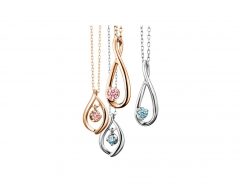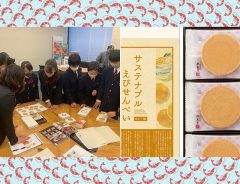
Source: PR Times
Nagano based company develops robot designed to reduce burden on declining rice farmers
- Tags:
- Farming / Rice / Robotics / SDGs / Technology
Related Article
-

Japanese jewelry brand Canal 4℃ selling jewelry made with sustainable lab-grown diamonds
-

McDonald’s Japan to begin providing wood utensils and paper straws nationwide
-

Japanese YouTuber Recreates Hokusai’s Great Wave in Fried Rice
-

Japan’s Ajinomoto sells veggie drink made with sustainable superfood Wolffia globosa
-

Hand-drawn traditional Kyoto Yuzen textile patterns are turned into NFT products
-

Sustainable shrimp crackers co-developed by Japanese H.S. students in SDGs project go on sale


Despite the fact that consumers have become more aware of their health in recent years, there hasn’t been any increase in quality natural farming methods or reductions to the use of pesticides in agriculture. This issue was brought on, and continues to worsen, due to the ageing population of farmers, which in turn is also inevitably leading to a growing labour shortage.
These problems are affecting all parts of the farming industries, but it seems that in Japan, rice farmers may be amongst some of the worst affected. With the increase of costs and a decrease in workforce, producers are forced to utilise pesticides and undesirable methods to cultivate rice, despite knowing that plants grown in a more natural way would be better for the health of consumers.
Facing a future where the number of experienced farmers is expected to decrease even further, a robot designed for rice farming has been developed to reduce the heavy labour and relieve the environmental burden currently resting on the shoulders of those involved in the farming industry.
The robot is called Mizuni Goal, and is designed to alleviate up to 80% of tough manual labour through automation.
Generally, farmers need to weed rice fields during rice cultivation using a manually pulled weeding device. This device uses a chain to make the water in the rice field muddy, blocking the photosynthesis of weeds that could deprive the rice plants of nutrients if left undisrupted. This manual method needs to be continued every 7 to 10 days for 1 to 2 months, normally in harsh working conditions under the direct heat of the scorching sun.
Normally it takes at least 2 hours to manually “mud” one tan (1000m²), but with Mizuni Goal the task can be completed in about 20 minutes. In addition, through the robot’s consistent stirring of the rice paddy water, it essentially rids the need for herbicides and pesticides, and at the same time helps to spread oxygen equally to the roots of the rice plants – which is believed to improve the quality of rice.
Mizuni Goal is developed by creative agricultural company Hatake Hotke, which is overseen by president Hiyoshi Yui (pictured above, top left).
Hiyoshi devoted his 20s to music production, but after failing to make a major debut he left the business in frustration. After that, he ran a 3DCG company in Roppongi for 20 years, but decided to pack up and leave Tokyo in 2020 to settle down as a farmer in Nagano’s Shiojiri City. Experiencing farming for the first time in his life Hiyoshi soon became acquainted with the issues in agriculture, and ultimately decided to start a business dedicated to alleviating these issues for both himself and his fellow industry workers.
Mizuni Goal has been part of a start-up demonstration experiment in Nagano Prefecture, which is known to have the largest number of small-scale farmers in Japan (with more than 100,000 of them registered in the Prefecture), and as such has been prone to agricultural issues such as a shortage of successors and the abandonment of cultivated land.
As part of the project, farmers in the prefecture will be able to rent the robot for 100,000 yen per season during 2022. When the official release happens in spring of 2023, sales will proceed according to feedback received directly from the farmers.
Mizuni Goal product overview and specifications
Official product name: Mizuni Goal 1.0
Specifications: Waterproof/durable, radio-controlled battery drive
Size: W 83cm x H 40cm x D 110cm
Weight: 7.3kg
Participation in demonstration experiment and advance rental fee: 100,000 yen/season (estimated from May to July 2022)
Reservation period for 2022: 2 April – 10 May
Further details about the project can be found via the crowdfunding platform CAMPFIRE